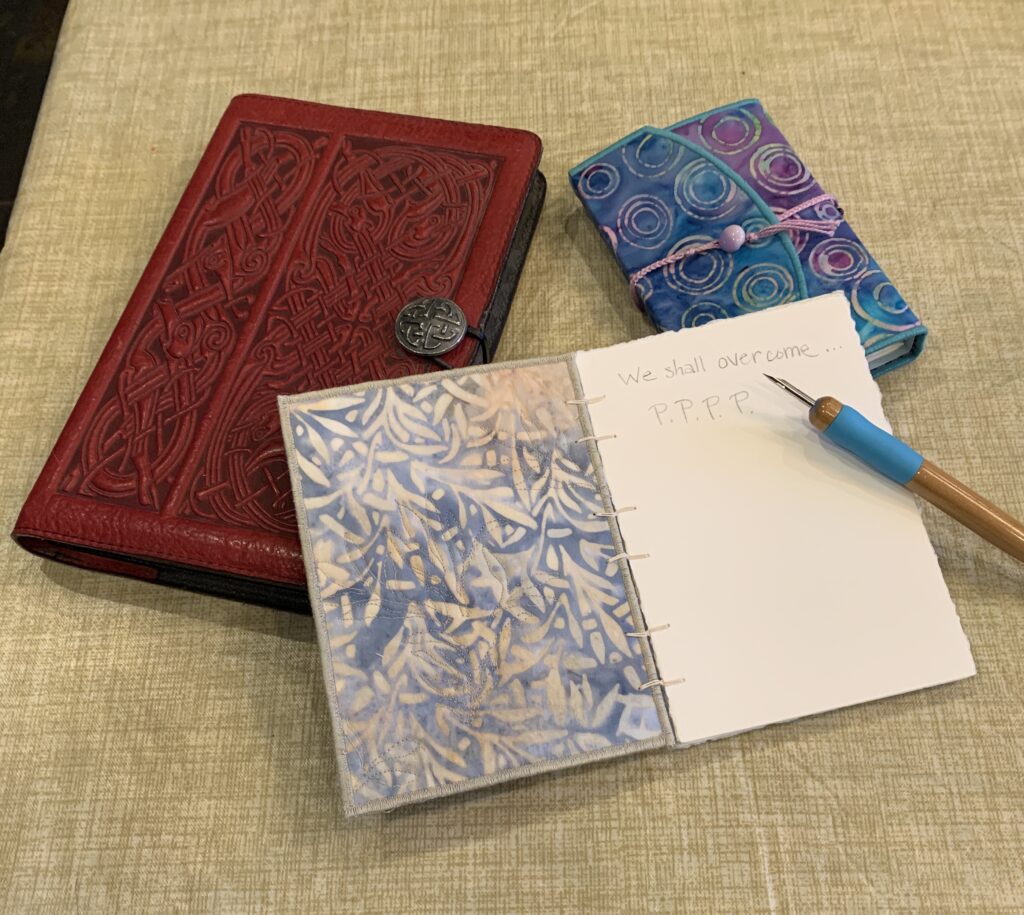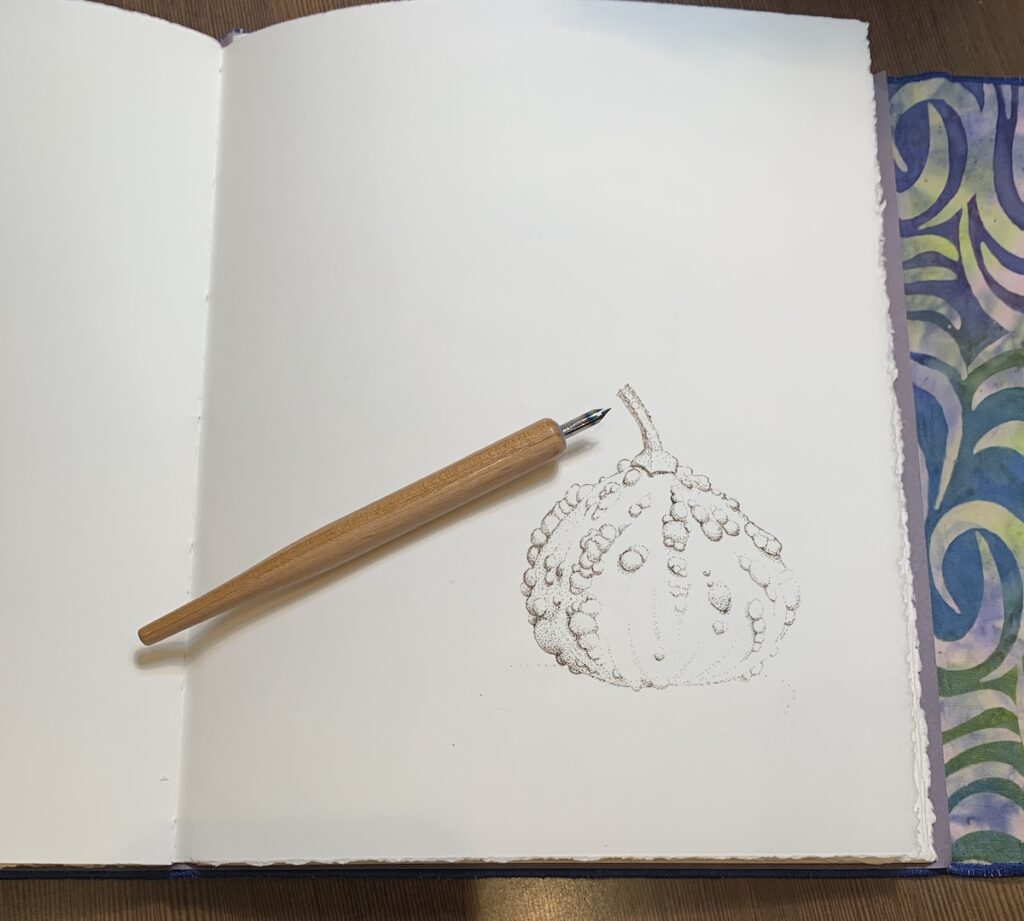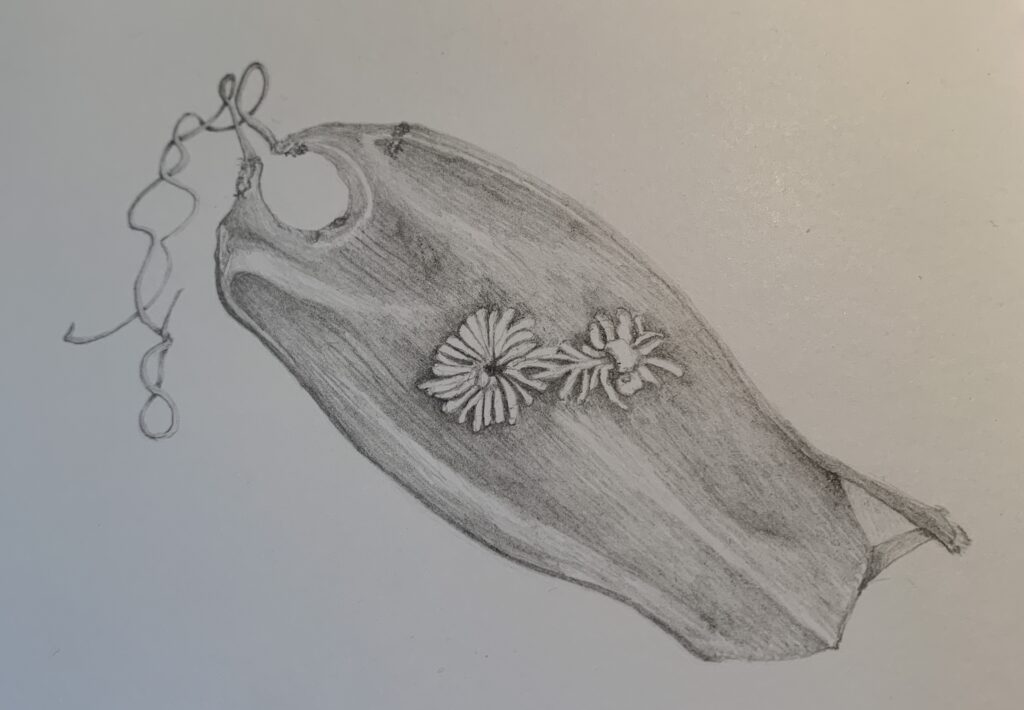
I’m calling it P.P.P.P. Nearly every artist I know has a moderate to severe case of this serious condition: Precious Perfect Paper Paralysis. The only cure I know of for the artist is the copious application of a graphite pencil. Once the graphite pencil therapy is well tolerated, the patient can advance to INK!
All joking aside, one of the hardest things for artists (and writers) to overcome is the preciousness of an unblemished page. It’s worse when the pages are bound into a lovely journal, as above, and you are approaching an empty page with an indelible medium. Because ruining one page of a journal is tantamount to desecration of the entire book and we are conditioned from our earliest days to revere books and not deface them unless we are making notes in the margins with a pencil, it’s inordinately hard to put pencil to a blank page in a book. So, the reason I advise pencil as a cure for stubborn cases of P.P.P.P. is because pencil marks are erasable and condoned even for use on the precious pages of textbooks, possibly the most exalted of all books with the notable exception of the Bible.* This embedded knowledge that pencil marks are allowed and even approved in certain books comforts our souls. So starting anything with a pencil should be less daunting:

I know many art teachers/gurus, especially among the nature journaling and urban sketching crowd, recommend skipping the pencil phase because starting something that you intend to finish with ink or colored pencil or watercolor with a pencil is a crutch that can be as limiting as a physical crutch you might use if you’d injured your leg. But, graphite can also be an artistic end unto itself and is inarguably an art tool as fine as any other you care to name and as permanent:

Fooling the brain into thinking it’s just playing around and not engaged in making ART can really help. Or fooling it into thinking it’s making records that will be useful later, either to yourself or to others, can also liberate the timid brain from the fear that it might somehow make inferior art. This is why I was keen to start my own perpetual journal from the first moment I saw one. The first thing I did was write a date range on every page of a blank journal. That wasn’t hard. Now EVERY page spread of that journal already has marks on it. The next thing was to tell myself this was simply going to be a useful record of things that happen in nature around me regularly through the year. That helped. It continues to help. I’m filling that journal slowly but surely with drawings of mundane things I see around me that I find interesting. Sometimes I start right in with ink as Lara Call Gastinger recommends, but that is admittedly scary and not for everyone. More often, I start with a pencil underdrawing that is meant to be erased as with the gourd drawing above. Sometimes I make the pencil drawing the whole point of the exercise, as with the Mermaid’s Purse/Shark Egg Case above. Pun intended and the pointing of pencils is a subject unto itself for another day. But today’s point is that I rarely suffer from P.P.P.P. with this journal anymore.
Here is one final piece of advice I will share that I got from Carol Bryer Fallert in a quilting workshop: notice what you notice. That sounds like it might be a tautology, but really it isn’t. Pay attention. Look around you. You’ll notice small things that interest you. When you do, put a sketch of it in your book, not because you’re going to make art, but simply because you noticed it in that moment and found it interesting. Later you will go back and page through your journal and remember that moment when you noticed. I find I collect things as I go about my life and think, “Ooh, I want to put a sketch of that in my journal.” This works way better than thinking, “Oh, I need to do a drawing, what shall I immortalize today?”
*The Bible is an interesting exception because while it is the most revered book of all time, for generations, people wrote in “Family Bibles,” recording marriages, births and deaths and then passed these Bibles down to subsequent generations, thus providing a rich trove of information for current genealogists, but that’s another rabbit hole altogether. Writing critical information in a space designated for that information with an indelible medium is not comparable to making “art” with the same implement on a blank page.
